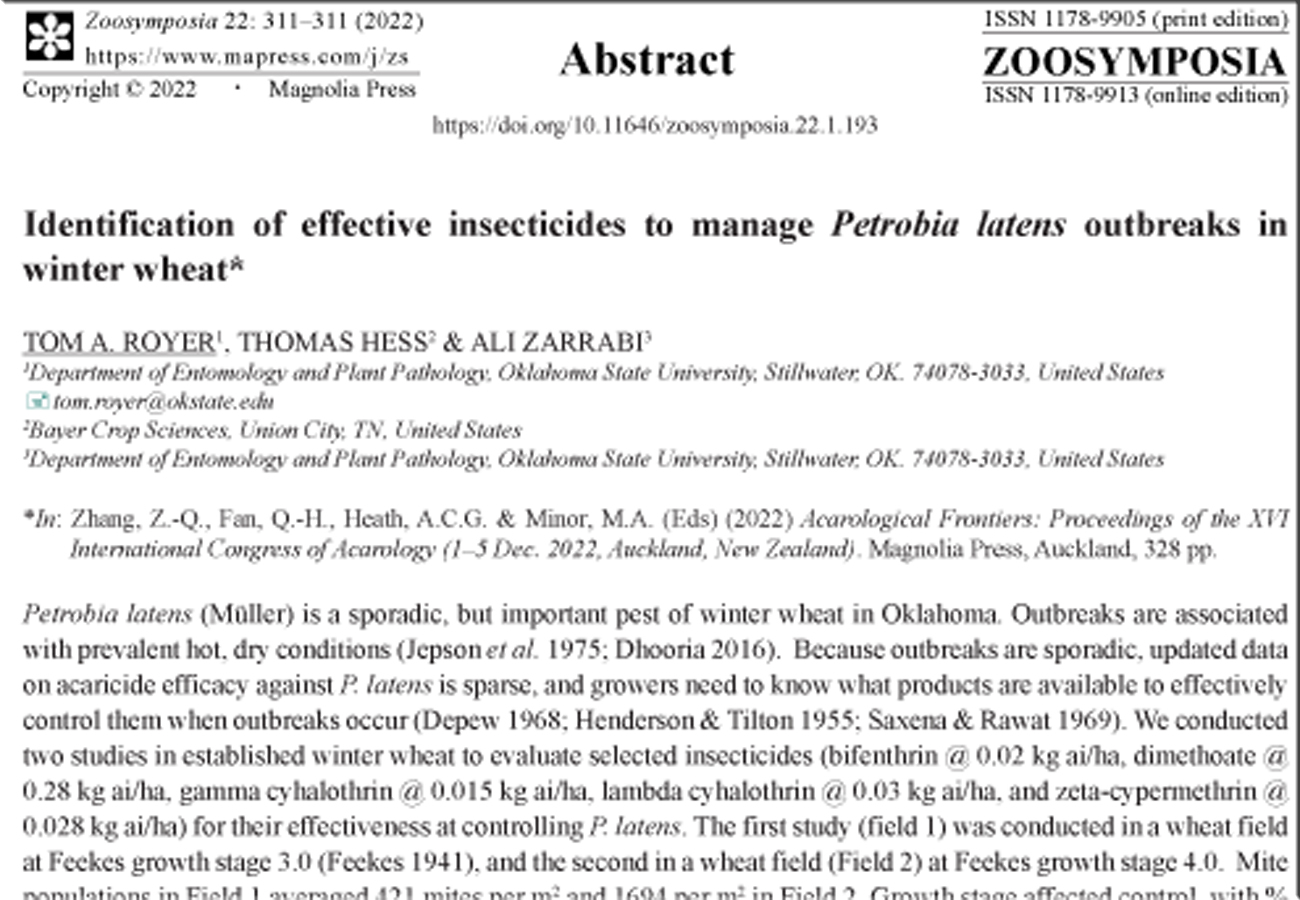Abstract
Petrobia latens (Müller) is a sporadic, but important pest of winter wheat in Oklahoma. Outbreaks are associated with prevalent hot, dry conditions (Jepson et al. 1975; Dhooria 2016). Because outbreaks are sporadic, updated data on acaricide efficacy against P. latens is sparse, and growers need to know what products are available to effectively control them when outbreaks occur (Depew 1968; Henderson & Tilton 1955; Saxena & Rawat 1969). We conducted two studies in established winter wheat to evaluate selected insecticides (bifenthrin @ 0.02 kg ai/ha, dimethoate @ 0.28 kg ai/ha, gamma cyhalothrin @ 0.015 kg ai/ha, lambda cyhalothrin @ 0.03 kg ai/ha, and zeta-cypermethrin @ 0.028 kg ai/ha) for their effectiveness at controlling P. latens. The first study (field 1) was conducted in a wheat field at Feekes growth stage 3.0 (Feekes 1941), and the second in a wheat field (Field 2) at Feekes growth stage 4.0. Mite populations in Field 1 averaged 421 mites per m2 and 1694 per m2 in Field 2. Growth stage affected control, with % control ranging from 48% to 64% in Field 1, while % control ranged from 81% to 88% in Field 2.
References
Depew, L.J. (1968) Further evaluation of acaricides for brown wheat mite control on winter wheat in Kansas, 1963–1965. Journal of Economic Entomology, 61, 1171–1174. https://doi.org/10.1093/jee/61.5.1171
Dhooria, M.S. (2016) Mite pests of field crops. In: Dhooria, M.S. (Ed.) Fundamentals of Applied Acarology. Springer Science, Singapore, pp. 275–306. https://doi.org/10.1007/978-981-10-1594-6_13
Feekes, W. (1941) De Tarwe en haar milieu. In: Verslagen van de Technische Tarwe Commissie, 17, Hoitsema, Groningen, the Netherlands, pp. 560–561.
Henderson, C.F. & Tilton, E.W. (1955) Tests with acaricides against the brown wheat mite. Journal of Economic Entomology, 48, 157–161. https://doi.org/10.1093/jee/48.2.157
Jepson, I.R., Keifer, H.H. & Baker, E.W. (1975) Mites Injurious to Economic Plants. University of California Press, Berkley and Los Angeles, CA. https://doi.org/10.1525/9780520335431
Saxena, D.K. & Rawat, R.R. (1969) Chemical control of the brown wheat mite Petrobia latens (Müller) (Acarina: Tetranychidae) on wheat. Plant Protection Bulletin, India, 21, 7–12.

